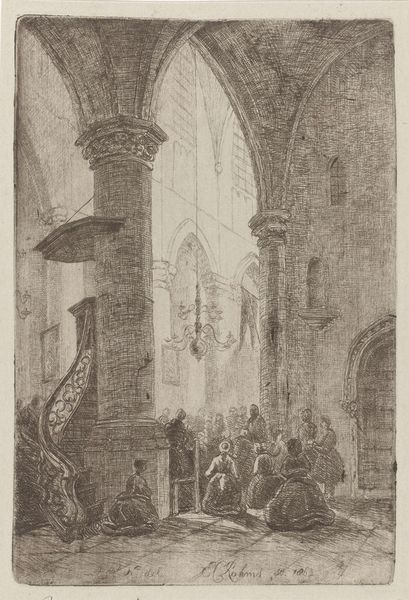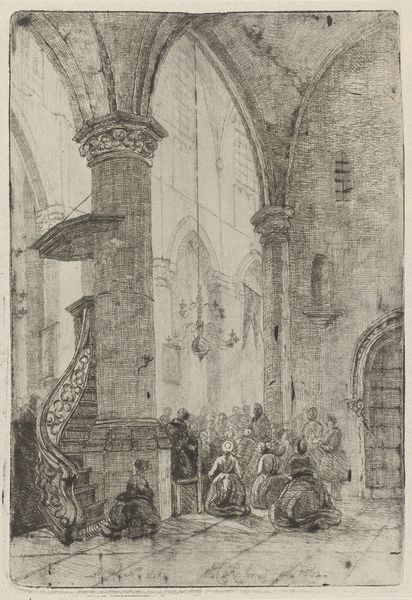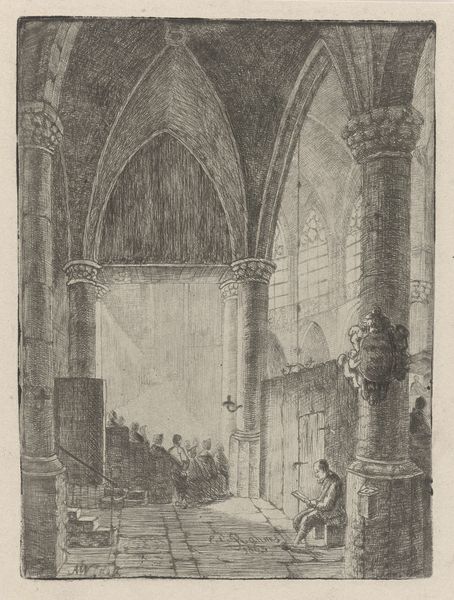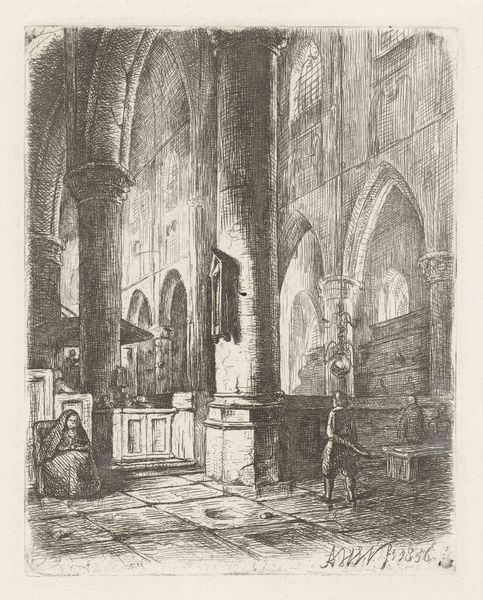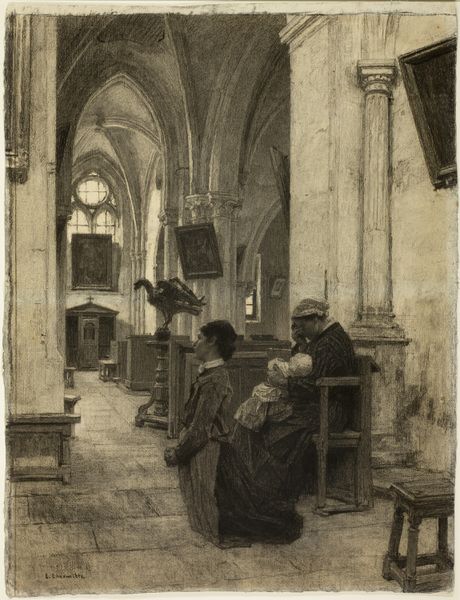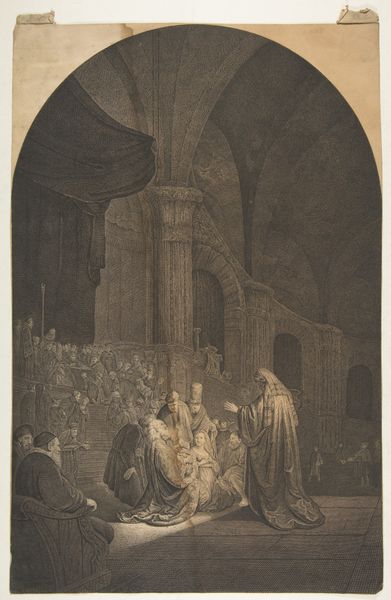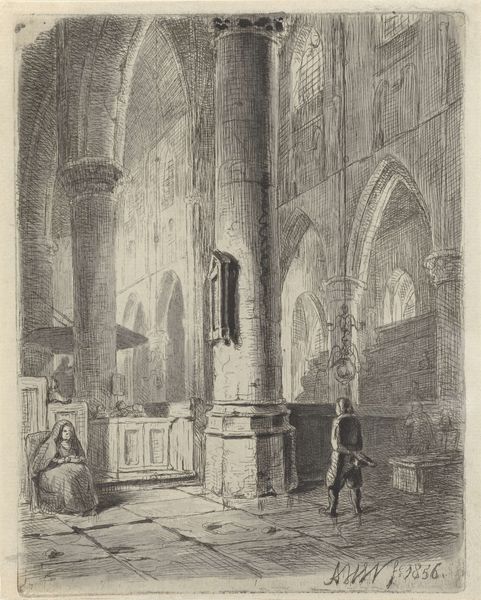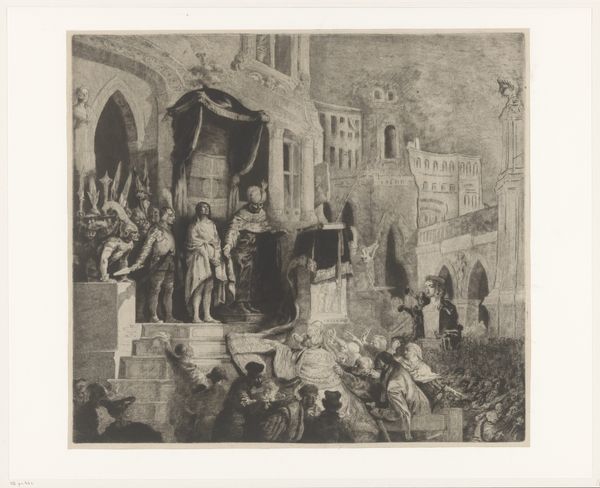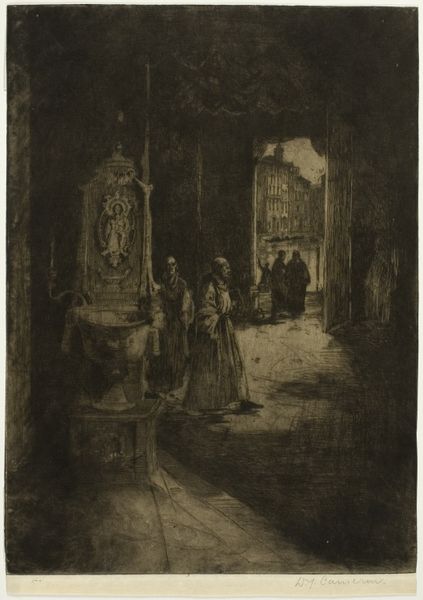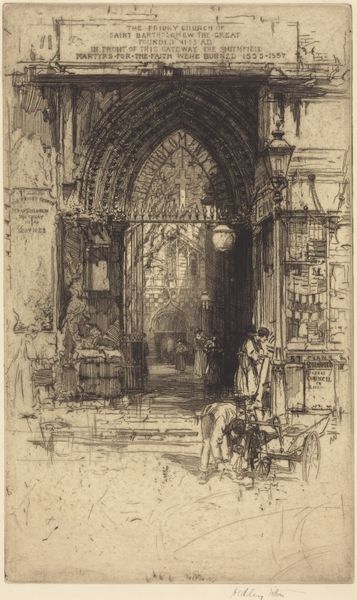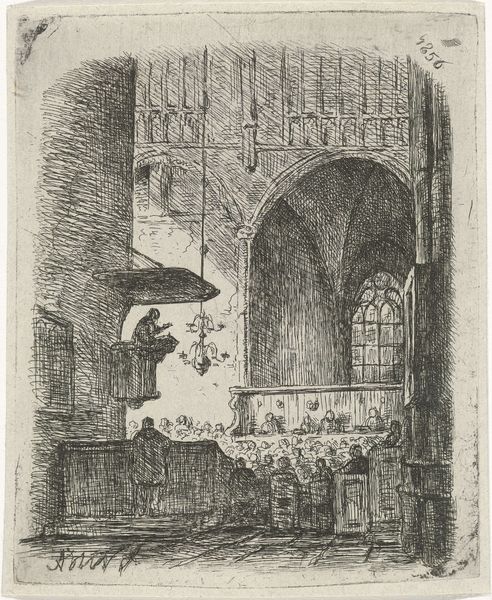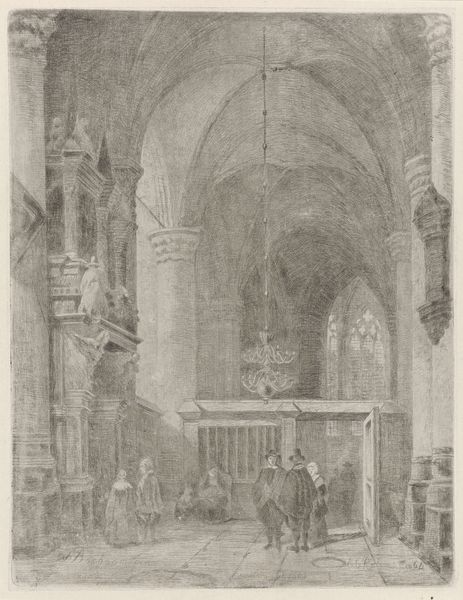
print, etching
# print
#
etching
#
figuration
#
19th century
#
genre-painting
#
history-painting
#
realism
Dimensions: plate: 24 x 19.5 cm (9 7/16 x 7 11/16 in.) sheet: 25 x 20.5 cm (9 13/16 x 8 1/16 in.)
Copyright: National Gallery of Art: CC0 1.0
Léon Augustin Lhermitte created this print, "An Episcopal Visitation," using etching, a process that gives the image its distinctive character. The artist covered a metal plate with a waxy, protective layer, then scratched through it with a needle to expose the metal. When the plate was dipped in acid, the exposed lines were eaten away, creating grooves that would hold ink. The character of the etching is evident in the fine, precise lines, creating a sense of depth and shadow. The material and process contribute to a feeling of solemnity, reflecting the weight of religious tradition and the social hierarchy depicted. Lhermitte was known for depicting the lives of rural workers, and here, the etching technique allows him to capture the details of the scene, from the grand architecture to the humble clothing of the congregation. Ultimately, understanding the process of etching helps us appreciate not only the aesthetic qualities of the print, but also its commentary on labor, class, and religious institutions.
Comments
No comments
Be the first to comment and join the conversation on the ultimate creative platform.
